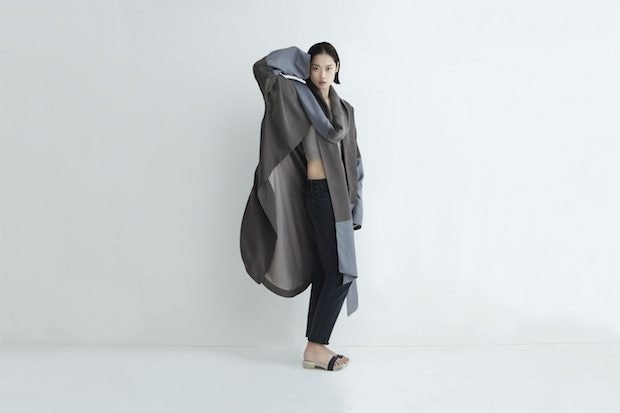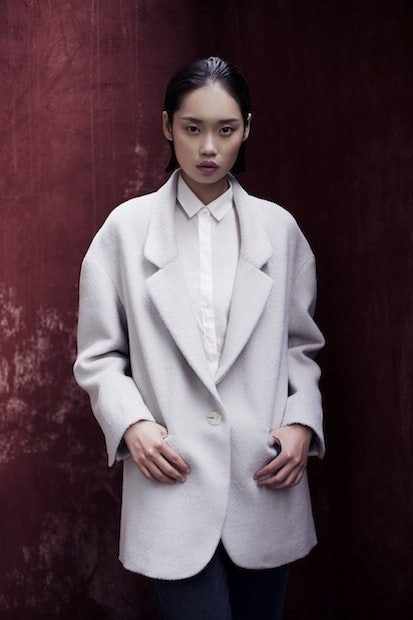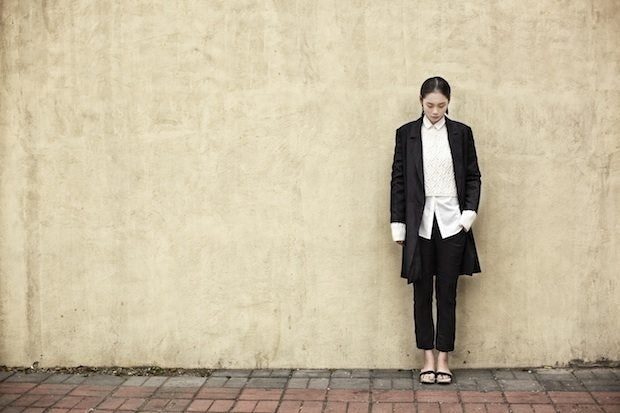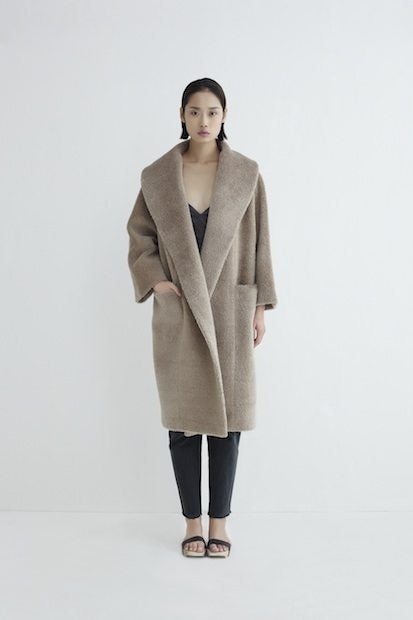
NEEMIC's brand philosophy is equal parts sustainability and design. (Huang Weijie)
China’s rampant pollution and numerous product safety scandals have placed environmental issues front and center in the lives of China’s urban residents. As a result, companies featuring eco-friendly, natural products are hoping to gain the attention of Chinese consumers looking to buy goods that won’t harm themselves or the environment.
One Beijing-based brand on the cutting edge of this movement in the fashion sphere is NEEMIC—a self-proclaimed “hybrid” brand that focuses on both fashion and sustainability. Using all-natural fabrics such as linen and silk, the brand is equal parts idealism and pragmatism, with a philosophy that the clothes’ aesthetics and quality are just as important as their eco-friendly emphasis.
In order to learn more about the status of the sustainable fashion movement in China, we interviewed NEEMIC and Beijing Fashion Collective co-founder Hans Martin Galliker on the brand’s philosophy, its recent participation in Beijing’s JUE Festival, and how eco-fashion can appeal to Chinese consumers in a world of fast fashion and mega-brands.
How is your brand’s philosophy and approach to fashion different from a typical fashion brand?#
NEEMIC's work is centered around three visions: One, creating outstanding fashion; two, making the industry more environmentally sustainable; and three, building bridges between Europe and Asia. Our efforts are going beyond those of average independent fashion brands. We want our operations to become a holistic, closed loop circle—we call it a perfect "eco-system of creativity and sustainability." Our philosophy and approach is heavily influenced by co-founder Amihan Zemp's background in sociology and my background in sustainable agriculture and IT.
You recently presented at an event called MAKE 5ENSE as part of Beijing’s JUE Festival. What was the main idea of your presentation?#
MAKE 5ENSE consisted of five artists guiding the audience on a sensual journey, nurturing feelings of awe and wonder with their unique performances. Instead of simply going for the obvious, the visual sense, I instead went for "textile maneuvers in the dark," to approach the touch sense. I made this decision because the fabrics which NEEMIC uses feel so good, are of the highest quality, [and] are all-natural, and some are even organic. It was completely dark during MAKE 5ENSE, with only an MC giving instructions. We released little pieces of floating natural fabrics onto the surprised audience. They were asked to communicate non-verbally by touching each other and sharing the fabric pieces, ensuring that everyone got one. This was followed by 10 dancers moving through the audience, each wearing NEEMIC clothes made from different fabrics with a distinctive surface feel, hugging them and eliciting a sensual touch experience.
To be honest, in the beginning I was unsure whether this would work out—whether this slightly unusual approach was going too far. The dancers were also a bit nervous. Luckily everything went great, the audience was really open and enjoyed the novel hugging and fabric-touching experience. The empathetic guidance of "The Voice of God," MC and professional magician Kemin (科民), also greatly helped. After the show the audience went to see the dancers and touched their dresses again, curious to find out who and what had touched them in the dark.
This C!Talk MAKE 5ENSE event was artistically motivated, but there are also implications for the fashion industry. Independent designers that use natural, high-quality fabrics which are manually produced don't have capital access to enable economies-of-scale, and also bear cost structures which don't allow them to be exhibited at various point of sales. So many customers simply don't have the chance in real life to see and touch the difference of indie designer fashion compared with mainstream fast fashion.

(Huang Weijie)
What is the inspiration for your latest collection?#
One reason that NEEMIC set up the NPO Beijing Fashion Collective was to help support the availability of organic fabrics to independent Chinese fashion designers. A recent project that we are overseeing is the planned “BNC x GOTS special collection” for this autumn. GOTS is the global organic textile standard and Brand New China is one of China's leading indie designer boutiques, reselling 110 domestic brands. We are also planning an all-organic collection, designed collaboratively with three well-known designers.
We will try to win Zhou Xun (周迅) as a goodwill ambassador, because she not only has a green heart and good taste, but can further help cheer up sustainable fashion that is "Designed in China." Such approaches can be quite inspiring, and if they succeed, will hopefully motivate the industry to do the same, unleashing demand for the increased availability of organic fabrics in the Chinese for retail market.
What makes NEEMIC’s clothing more environmentally friendly and sustainable than that of mainstream labels?#
We use all natural fabrics such as linen, hemp, silk or ramie, some organic certified, some up-cycled from production leftovers, and some from decomposing old jeans or leather jackets. Some of the fabrics are hand-made, such as the ramie (Chinese: zhuma, 苎麻, also known as Zhongguo cao,中国草, or “China grass”) fabrics, which we source in China's ramie fabric capital Liuyang, where there are around 80 people left who live from producing these exclusive fabrics by hand. Most of these are for export to Japan's upper class, but are increasingly being sold to Chinese indie designers thanks to Liuyang-native entrepreneur and writer Yi Hongbo (易洪波), who has made it his mission to keep alive this worthy and eco-friendly manufacturing tradition. We like to give such suppliers a fair share of our hard-earned money.
NEEMIC notes on its website that some eco-friendly labels don’t put enough emphasis on the aesthetics of the clothes. Why do you think that is, and why did you decide to be different?#
That was perhaps somewhat blunt. My stance is that eco-friendly fabrics often limit color palettes and functionality. I admire purist eco-brands that are able to work within the confines of these limitations and nonetheless manage to come up with good-looking creations. Due to improvements in production processes and a positive list (of allowed chemicals), an increasing number of options are now possible.
For example, in March this year, GOTS announced version 4.0 of its regulatory guidelines. Compared to previous versions, more chemical inputs were approved for use, so long as they had undergone prior testing regarding their environmental impact. I personally welcome this pragmatic approach, but there is wide disagreement in organic circles due to concerns that such "dilutions" will negatively affect consumer perceptions where there are assumptions that organic means pure organic.
At NEEMIC, we are even more pragmatic; for the sake of creating a beautiful and fashionable piece, we sometimes even use fabrics like sand-washed silk, which at the source is a natural product, but I wouldn't consider it to be very eco-friendly. On the other hand, it looks and feels so beautiful and exclusive, the proud owner of this silk piece will treat it with utmost care and keep it for a decade or even the next generation. Environmental deficiencies at the beginning can be compensated with our "hybrid" approach if the environmental lifetime balance is positive.

(Huang Weijie)
How much awareness of sustainable fashion exists in China today?#
A large proportion of the Chinese population has long valued good-quality clothing. Due to China’s rapid economic development, this tradition has suffered and the market has been swamped with cheap, low-quality clothing and international fast-fashion chains, which the culturally curious younger generation find alluring. However, due to higher costs along the value creation chain and competition with international brands, domestic producers have been pressed to establish themselves in higher-quality ranges as well—to the advantage of the conscious Chinese consumer.
Last but not least, the tainted food and other environmental scandals have led to a more sensitive and selective approach amongst people with regards to what they consume. Until last year, this awareness was solely in the baby fashion sector. Now awareness is increasingly filtering out to include adult clothing, where customers are asking our reseller boutiques for eco-attributes. This implies growing markets for eco- and quality fashion.
Do China’s pollution levels and other serious environmental problems help to make Chinese consumers interested in your brand concept?#
Some get to know us through our involvement in other organizations, such as the NPO Interactive Beijing, which crowd-sources and incubates ideas for social and environmental change. There are many synergies, which for us is as exciting as it can be for potential consumers.
Do you think most of your current Chinese customers are buying your clothes for their design or your brand’s sustainable philosophy?#
They will first see NEEMIC's focus on fashion design, and once they get to know more about our engagement with creativity and sustainability, they might even be willing to help spread the word.

(Huang Weijie)
Chinese consumers are known for their interest in major fashion brands, but many are saying that’s changing as tastes evolve. As a smaller niche label, have you seen growing interest in your brand?#
As always, a good-quality product and good PR doesn't necessarily equate to a high conversion rate in sales. In order for niche labels to gain market traction, they not only need to excel in sustainability, but also need to be marketed professionally. We are working on that. To take further advantage of growing interest, we are developing more customized services to better improve customer satisfaction. For example, a visually appealing online shop module that guides customers through a made-to-measure order process will not only increase customer satisfaction, it will also improve overall sustainability, since made-to-order pieces are kept for much longer than off-the-rack items.
What do you think the future holds for NEEMIC and the sustainable fashion movement in general?#
We are striving to become an international household name for cool, sustainable designer fashion. If we find an investor we will extend our work to encompass male fashion, where we see even better market potential.
The up-cycling specialist FAKE NATOO, ffiXXed, which produces in-house under fair-trade conditions, or the eco-friendly active-wear FINCH are other pioneers who will hopefully benefit from the rise in demand for sustainable fashion. Mainstream markets are increasingly aware of such a rise. Recently, there has been growing interest from property developers in our Sustainable Fashion Design Center concept, which would further facilitate the sustainable fashion movement. Innovations like these are nurturing the rise of "Handmade in Beijing" and "Designed in China" in becoming internationally valued trademarks.